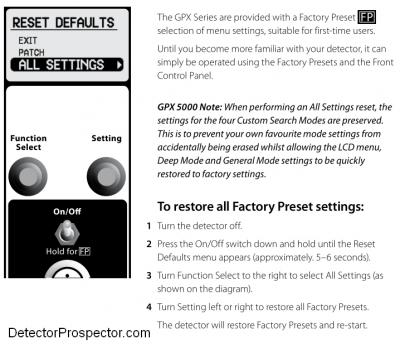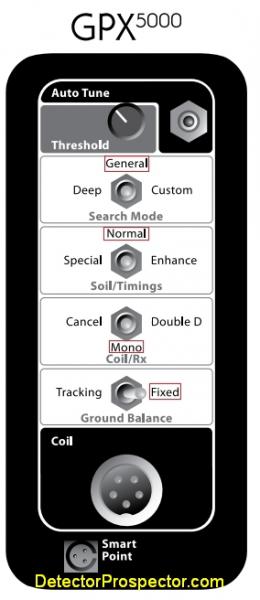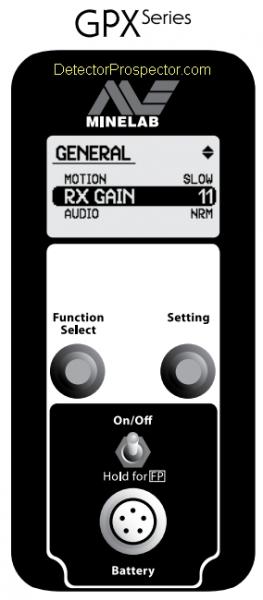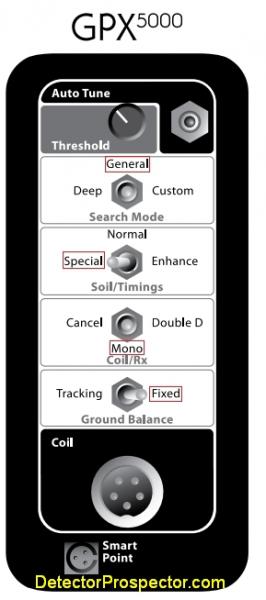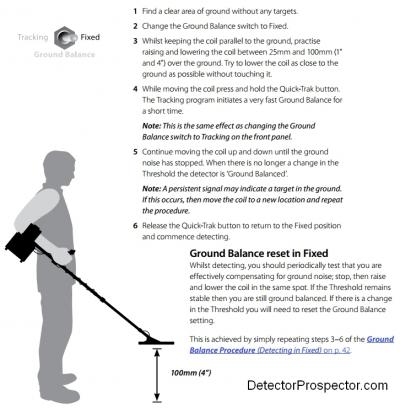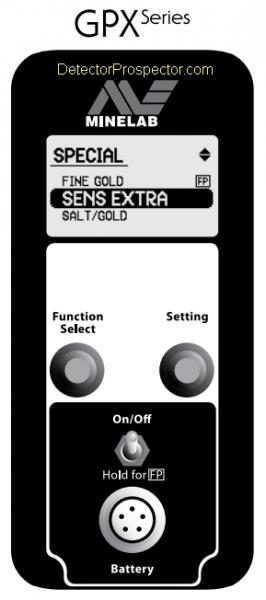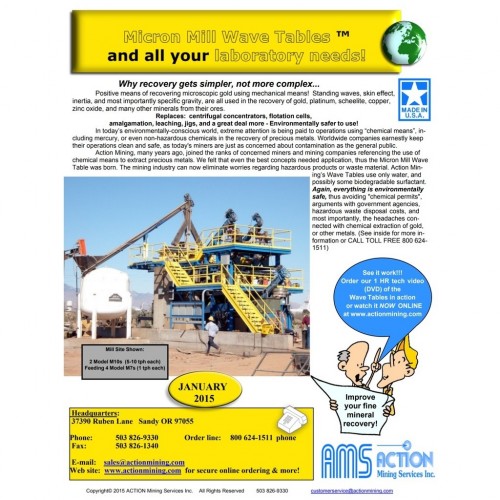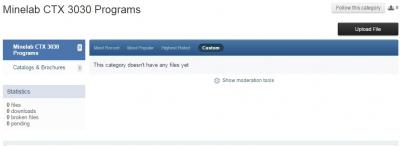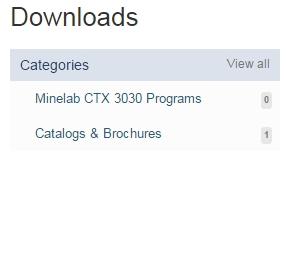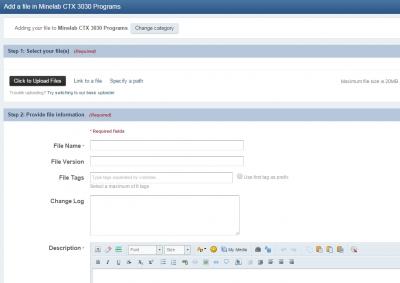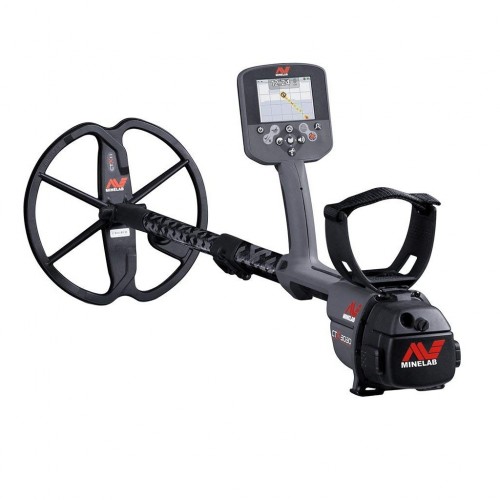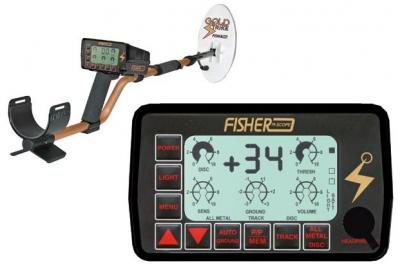-
Posts
19,761 -
Joined
Content Type
Forums
Detector Prospector Home
Detector Database
Downloads
Everything posted by Steve Herschbach
-
http://golddetecting.4umer.net/t21243-3-gpz-s-in-the-field-for-a-week-review This is a well written and informative report. Unfortunately, I am not surprised to hear about a bad coil in one respect due to the complexity of the coil. On the other hand, how in the world does a $10,000 detector get out the factory door with a bad coil? I understand a company cranking $500 detectors out the door can't check every one. But for $10K that would seem to be something the purchaser is paying for. Hopefully just early days issues with quality control that will get sorted out. I have noted elsewhere that the GPZ 14 coil gives really complex targets response up close when the target is near the windings. Double blips, reversing tones, etc. The deeper responses are more even and "normal". Interesting that these blokes have used that as a sort of shallow target discrimination feature, going only for deeper mellow targets and ignoring the complex surface signals in trashy areas. Would work very well in birdshot, for instance. You would miss a very shallow nugget also but the method is a sound one for trashy locations.
-

Five Rp Bits With Some New Settings
Steve Herschbach replied to jasong's topic in Detector Prospector Forum
I have not noticed it specifically with the GPZ but I have observed it with other detectors. The reality is that ferrous targets and ground iron mineralization overlap to a certain degree and ground balancing not only removes ground effects but some ferrous targets. In thick ferrous trash tracking systems can "track into the iron" with ill effects and so manual ground balance is preferred in those situations. What we really want is a ground balance system that would balance out ferrous trash along with the ground and still show us the non-ferrous items, but unfortunately we are not there yet. Ground minerals are magnetic but generally have little or no conductivity worth noting except for alkali or salt flat conditions. Ferrous metals on the other hand are not only magnetic but highly conductive which is where we get all the problems with steel items in particular. Ferrous metal that has almost completely rusted away is slowly turning into the original ferrous material from whence it came and so is more likely to be ground balanced out. Meteorites grade from pure stone to pure metal and everywhere in between. When you think about it a meteorite is just a hot rock, so it makes sense that a good system for eliminating hot rocks would also tend to have the side effect of eliminating or reducing the signal from some meteorites. This would tend to happen more with those that have the least metal in them and are mostly stony in composition. Like everything detecting it is all sort of relative. A meteorite in low mineral ground is going to stand out loud and clear because it differs so much from the ground, the very definition of a hot rock. The same meteorite in highly iron mineralized ground may be passed right up by the detector for being too close to the ground itself and therefore the current ground balance setting. -

Five Rp Bits With Some New Settings
Steve Herschbach replied to jasong's topic in Detector Prospector Forum
Best is what works. A big issue in metal detector land is stability versus depth and sensitivity. Usually, the hotter you make a detector the more noise you get in the form of ground noise and potentially electrical interference. In VLF detectors this has been a big issue with the Fisher F75. It is an extremely hot, high gain detector, but had always had issues with being noisy. So noisy in some urban areas as to be unusable. Recent upgrades to the machine focused on alleviating this issue, only to create more problems with lost depth and sensitivity. It has pretty much been sorted out now, but it highlights how hard it is to create extremely powerful metal detectors that can run quietly, only detecting what we want. Early Minelab PI detectors all had a warble that kind of drove me nuts. I would hear it in my head hours after turning the machine off! Newer models improved the threshold until the GPX got it perfect. Now, in an attempt to get hotter, we got the SDC 2300 along with a ratty threshold some people find unpleasant. You can tame the noise but at the same time you lose an edge in sensitivity. Maybe. If the noise is distracting you so much you miss a signal, that is no good either. There is a lot to be said for smooth, stable theshold sounds. It allows faint signals to stand out as opposed to hearing a sharper faint signal in the midst of a barrage of noise. The GPZ is not as bad as the SDC and can be made to run with a smooth threshold but the operator still faces what I think is a personal choice issue. Some people can tolerate more noise on a continuous basis and still pick out actual targets when they occur. Others lose those targets in the midst of the noise and are better served making the threshold as smooth as possible to make the targets more obvious. I don't think ultimately anyone can say one method is better than the other. In theory suppressing the noise may suppress some edge of detection targets. But if the noise makes the actual act of metal detecting oppressive for the operator that is going to be a losing situation. Doing this all day for days on end, I need the experience to be pleasant. I am not out there to torture myself to the point of being relieved to quit detecting. It is tiring enough work as it is. Long winded response but I like what you are doing jasong. I think there is room for both methodologies. I tend to go for smooth and relatively quiet when spending long hours patch hunting. I want to go for a nice wander and enjoy life without listening to noise all day. But when I am on that patch, getting real down and dirty, that is the time to pull out the stops and run the machine hotter and noisier if need be, especially on pounded patches. One thing for sure. A tame GPZ is still more powerful than almost any detector on the planet regardless of settings! Still learning myself. I figure by the end of summer I will have it sorted out, but until then all the notes we can all contribute about the GPZ and our experiences will help us all. Thanks! -

GPX Help For A Beginner Please?
Steve Herschbach replied to Rege-PA's topic in Minelab Metal Detectors
Thanks Gold Hound, any suggestions appreciated. The problem is there is always more to talk about with the GPX. Just trying to explain that the Special Switch is really just selecting something else set somewhere else gets confusing. The big fail on the GPX was in not allowing the custom modes to be fully custom. You can only save some settings and not others so most people ignored them. If I could have had just one simple change though it would be to swap the threshold setting from the knob into the menu and put the RX Gain on the knob. I almost never messed with my threshold setting but was always wanting to tweak the gain. I once talked to the engineers and suggested they develop a system of "automatic timings". The GPX knows enough to sense and adjust the ground balance. So it knows when the ground is bad. Why not just suggest to the operator based on what it is seeing what timing to use, or even have that adjust automatically on the fly? He thought it a great concept, but I think even then the GPZ was already on the drawing board so it went nowhere. -

GPX Help For A Beginner Please?
Steve Herschbach replied to Rege-PA's topic in Minelab Metal Detectors
This is as simple a basic guide as I can imagine, and simple is often best. You can get a GPX real screwed up fiddling with the settings! So the most important tip of all is The Factory Reset. OK, you have a fresh start. The GPX will save your changes going forward when you turn the detector off. If you get worried or confused, just do the Factory Reset again. I think there are three very basic Soil settings (or Timings as Minelab calls them) on the GPX 5000 for beginners, all which use the stock 11" mono coil. The GPX series was designed with mono coils in mind so just start there. The three Timings are Normal, Fine Gold, and Sensitive Extra. Normal is the "go to" mode for the beginner. Set all the switches on the front control panel as follows: A. Turn the detector on by pressing and releasing the power switch on the rear control panel, the same one used to do the Factory Reset above. B. Raise the coil off the ground and press the Auto Tune button to reduce electrical interference. The tuning process takes approximately 60 seconds. Do not move the coil or pass metal objects near the coil until you hear 3 beeps. C. Turn the Threshold control clockwise until a hum is audible through the headphones. D. Press and hold the green Quick-Track button on the end of the foam covered handle. While holding the button depressed, raise and lower the coil, between 1" and 4" (25mm and 100mm) from the ground. You may or may not hear variations in the Threshold sound while doing this. Any variations in the Threshold will smooth out within 3–5 seconds. Release the Quick-Track button. You have just ground balanced the detector. E. Again adjust the Threshold to a very faint but still audible level. It should be smooth with only minor fluctuations. You are now ready to go find gold! There really is only one other key adjustment the beginner needs to know at this time. On the rear control panel turn the Function Select knob until the RX Gain setting is highlighted. The default setting is 11. If the detector is operated a short while and everything seems very stable, try adjusting this setting up a couple notches. If you change the RX Gain, it is a good idea to do the ground balance procedure above again after making the adjustment. Turning the Setting knob adjusts the RX Gain up and down. This is the basic sensitivity setting for the detector. Higher settings give you more depth, but also make the detector more susceptible to electrical interference and ground noise. The goal is to find a higher setting that does not make the detector threshold too unstable. You want a smooth threshold or as near to it as possible. On the other hand, if the default setting of 11 seems too unstable, reducing the RX Gain will help. Settings of 14 or 16 are not unusual, nor are settings as low as 8 or 9. The real secret to nugget detecting is coil control. Sweep over the ground while either scraping the ground with the coil or keeping it 1mm off the ground. I see people obsess over getting the best detector setting, then give it all up and more waving the coil an inch or two or three over the ground! Careful methodical hunting and attention to faint signals is the best way to learn. There are two alternate Timings I want the beginner to know. Fine Gold and Sensitive Extra. Think of Normal as just that - Normal Mineralization. Fine Gold is a bad name for a setting that is better thought of as Difficult Mineralization. Sensitive Extra should be thought of as Low Mineralization. If the GPX does not want to run smoothly in the Normal Timing and is having problems with ground noise or hot rocks, even if you lower the RX gain a bit, flip the Soil/Timings switch to Special. The Special Timings are selected via the LCD menu but the default is factory set for the Fine Gold timing. Simply flipping the Soil/Timing switch to Special puts you in Fine Gold. If you have been messing with the RX Gain while in Normal you may want to go back to 11 or 12 at this point, and again do the ground balance procedure as described above. Fine Gold, despite the name, was designed specifically for bad ground and eliminates all but the worst hot rocks. It is the preferred setting for bad ground. It runs so well people get in the habit of using it all the time. Do not do this, it does miss gold that can be found in the other two Timings discussed here. The key always with the GPX however is to seek quiet, stable operation, and Fine Gold does this very well. Again, experiment to find the highest RX Gain setting that you can run while maintaining stable operation. If in the United States in particular you may run into areas where the mineralization is low. You will know because you will be able to run in Normal with the Gain set very high, like 17 or above. If so, give Sensitive Extra a try. This is a very powerful and sensitive setting, and actually is the hottest setting for small gold nuggets, not Fine Gold as the name suggests. To try Sensitive Extra, again you need to switch from Normal to Special with the Soil/Timings switch. But now you need to use the LCD menu Function Select to find the SPECIAL settings. This determines what happens when you set the Special switch. Adjust the setting from the factory preset (FP) of FINE GOLD to SENS EXTRA. The Special switch now means Sensitive Extra. You can flip to Normal, and if you go back to Special you will be in Sensitive Extra. This will happen until you use the LCD menu to change the SPECIAL setting back to FINE GOLD or a different alternate timing. You are programming the Special switch setting to be whatever you want. The best thing at some point is to have Normal set up with either Fine Gold or Sensitive Extra as a preferred alternative, depending on the ground types you encounter most. Remember that if you ever do a Factory Reset that Fine Gold will become the default setting for the Special switch. Now that you are in Sensitive Extra, you probably need to go back to the RX Gain setting default of 11 again to start, and ground balance again. Seeing the pattern here, change timings or gain, you should ground balance again. Here is more detail on the ground balance procedure and how to check it periodically. Maintaining proper ground balance is critical. If going to Sensitive Extra starts causing problems with hot rocks or ground noise, just go back to Normal. OK, to sum up. Normal for Normal ground conditions. Normal is the key and your reference point. If Normal is having problems, then use Fine Gold for bad ground and hot rocks. If Normal is working almost too well, try Sensitive Extra for mild ground/minimal hot rocks. In each Timing find the highest RX Gain that will allow stable operation. Check your ground balance often and do again whenever in doubt. Go slow and carefully, and when learning investigate all targets. If you are digging ground signals or hot rocks, use lower gain levels or change Timings. That should cover most beginners and even a lot of regular users just fine. If you hunt the same areas regularly you will figure out what works there and rarely need to change settings. The GPX is actually pretty forgiving compared to a hot VLF detector. This is of course only my suggestions, not set in stone, and maybe not as clear as I hope it is. If it is not clear enough please tell me or offer suggestions, but my goal is to make it simpler, not more complicated, if that is at all possible. For additional details and information see the GPX 5000 Owners Guide and the detailed timings charts on this website. -
-

CTX 3030 On Gold Nuggets - Tips On Settings
Steve Herschbach replied to Gold Hound's topic in Minelab Metal Detectors
OK, here we go. I have activated the forums Downloads area. Look at the menu at the top of the forum, Chose Downloads Chose the CTX Programs category on left Click in Upload File button in upper right You can now upload the file from your computer. The file name is just the name or title you want displayed. You can give a more detailed description. I have uploaded a file already as an example and to test it works. Note:only forum members in good standing can upload and download files. Also, files are held until I scan them for possible virus infections, at which time I will approve them and they will be available for download. This adds a delay and is a bit overkill given the upload limitations built in but adds an extra layer of safety for forum members. Assuming this works well I can add any category of downloads the forum membership wants to have available. -
155 downloads
Gary UK programs for CTX 3030 from http://www.metal-detecting101.co.uk/2015/01/minelab-ctx-3030-programs-all-free.html Ten of Gary's most used settings How to share mlf files http://www.nhmetaldetectingforum.com/index.php?topic=10671.0 Minelab CTX 3030 Data & Reviews Minelab Metal Detector Forum -
I never met Mark but have met many like him. I am sure he is a great guy. Most super enthusiastic detectorists I know are always more than happy to help people out detecting. I love sharing what I know about detecting and helping get new people started at it. The best gig I ever had was running my operation at Moore Creek and seeing people every single week who never found a gold nugget in their life find the first one. We really made some lifetime experiences happen for people, great stuff. Sounds like you have that same great attitude - you are guaranteed to do well! Whole different subject but I do love my beach detecting - new thread soon.
-
I know the delay was not to be desired, but I like what Minelab did. Usually you would expect maybe being sent a new battery or charger or who knows and maybe that would or would not solve the problem. How many times have most of us had a problem with something and just wished we could get a whole new item, but were told no? Complete brand new unit from the ground up - problem solved!
-

CTX 3030 On Gold Nuggets - Tips On Settings
Steve Herschbach replied to Gold Hound's topic in Minelab Metal Detectors
There never will be miracle settings for the GPZ or most any other detector for that matter. You have to learn what the controls do, and the best way to do that is to use the machine. Each setting must be custom adjusted for each particular combination of ground type and gold. Anyone who uses a magic setting is a "Turn On and Go" junkie as you have described. Even Gold Hounds suggestions are just that - suggestions that work best for his conditions. Let's say you have a manual transmission car. What is the "magic setting" combination of gear setting and throttle setting that is best? Would that be third gear, half throttle, or fourth gear, one third throttle? It just depends on whether you are on a hill or not, whether you are passing someone or not. The gear shift and throttle exist with the sole intent of being adjusted as needed. So it is with the controls on your detector. Some settings will never be more than educated guesses. On the GPZ I might use High Yield or General based on my best guess of the depth of the ground and the size of the gold I am after. Neither is right or wrong, it is just a judgement call based on experience and knowledge of the ground. Some of us work solely in certain areas and so there really is a best setting for our situation. Somebody else somewhere else can settle on an entirely different "best setting". What works best for me in low mineral ground is not going to work best for somebody in extreme ground in Australia. Other people get around a lot, and so must be better prepared to adjust the machine for whatever conditions they encounter. The vast majority of people I have encountered do not use their detectors enough to ever really learn what the controls do or how to properly adjust them. Reading has limitations. Read all you want about playing a guitar and you will get no closer to being able to play a guitar. Detectors are like that. You have to use them and use them constantly to stay good with them. -

CTX 3030 On Gold Nuggets - Tips On Settings
Steve Herschbach replied to Gold Hound's topic in Minelab Metal Detectors
Really great and informative post - thank you Gold Hound! The attachment function is for pictures only. I will take a look at activating the downloads area of the forum which allows other file types to be shared with forum members. -
Same machines, lower price. They felt they had to do it to make sense compared to the new Racer models which basically have the same capability at a much lower price. The merger of Nokta and Makro required they rejigger the pricing structure. Now they are about the same price, even though the FORS models are probably much more expensive to make. You may not want to buy a detector you are skeptical of as it can have a serious psychological impact on early results "no gold, I just knew this machine was going to be no good". All downhill from there.
-

Fisher Goldstrike
Steve Herschbach replied to Bavarian's topic in First Texas - Bounty Hunter, Fisher & Teknetics
The 30 kHz is interesting. The main problem for Fisher was the success of the Gold Bug 2. Everyone including myself was expecting a Gold Bug 3. To this day I have wanted a detector just like the Gold Bug 2 but which could also be switched from 71 kHz to 15 kHz. The designer of the Gold Bug 2 (Dave Johnson) was no longer with Fisher however and it was under new managment. A new engineer who was also new to metal detectors came up with the Gold Strike. It weighed more, cost more, and did not detect small gold as well as a Gold Bug 2, although it went deeper on large gold. The threshold control works backwards (lower is higher?) and reading the description of how it operates in the owners manual is surreal. There is a large number displayed which appears to be a target id number but which is actually a target strength indicator. Basically, the louder the signal, the bigger the number. I have never seen another detector do that and it serves no real function, being just a numeric representation of what you are hearing. The machine was too different and totally bombed when it was released. I did one if my very first reviews on it that I should dig up and post as there is some interesting history there. The machine really was unique. I see some advertised for sale as new in box still which is weird as it has been something like over ten years since the Gold Strike was discontinued. -
Hi Rick, Basically, the vibration replaces or supplements the audio by feeding the same signal to the vibration device. The stronger the audio, the stronger the vibration. If a false audio signal is strong enough it will also produce a vibration. However, at least two nugget hunters have noted that faint hot rock signals do not produce a vibration when a small nugget will. I suspect these are borderline cases where the hot rock audio does not have the same "edge" as the audio produced by the small nugget, and so no vibrate signal on the hot rocks where they were. I have not replicated that myself and in fact other than playing with it have not used the vibrate function. It is a great idea and feature but reality after 40 years of detecting is I hunt by ear. The Racer is basically a FORS CoRe stuffed in a lighter package but there have been some tweaks. DI3 for instance is more powerful on the Racer than on the FORS models. The Gold Racer is taking everything learned with the FORS units and tweaking again specifically for use as nugget detectors. This is reflected in the fact that no date has been announced for release yet because the Gold Racer is still under development. If they just took a FORS Gold and stuffed it in a Racer box it would be out already. One area I hope is addressed with the Gold Racer is the tendency of the FORS models to easily overload. This is ok most of the time and can even be a feature of sorts in a park as it alerts you to shallow targets. But in very hot ground the units can go into continuous overload. This is mainly a problem in Australia but I have run into small areas where it happens. No amount of turning the sensitivity down helps, the units just become non-functional. They are very, very high gain detectors, and I think they need a lower gain mode to help deal with extreme mineralization. Basically, jury is out and nobody knows for sure but I am cautiously hopeful the Gold Racer might knock my socks off for a VLF. I think because of balance issues the FORS are inherently better for those wanting to use the big optional coil a lot. The Racer feels best with the stock or even the small coil option. The Gold Racer will come with the 10" x 5" DD coil as stock, said coil not even being an option with the Nokta units at this time. The machine the Gold Racer needs to match or exceed is the F19 Fisher.
-
At only $595 new with two year transferable warranty the FORS units are a steal. I do think the CoRe is the best choice for most people simply from a resale standpoint, plus, the COG mode may be helpful on alkali ground (salt flats). As far as I know it is every bit as good on gold nuggets as the Gold model, which was done mainly as a marketing move.
-

Best Detector For England
Steve Herschbach replied to walkerrj's topic in Metal Detecting For Coins & Relics
No matter what go with a machine you have used a lot and are very familiar with. The worst place to get used to something new is on rare and expensive trips. When I was there I actually took three detectors, the F75, MXT Pro, and CTX 3030. I may as well have left the CTX and MXT home because I pretty much just used the F75. But I saw a lot of people using the CTX and MXTs and Tesoro units. Teknetics T2 was real popular at one point. All you need is a reasonably light weight fast swinging detector that bangs hard on non-ferrous targets. Depth is not so much an issue, just covering lots of ground recovering lots of targets. I dug hundreds of non-ferrous targets every day. Your MXT would work good, your AT Pro would work good - there are probably a hundred detectors that would work just fine. The DEUS is light weight and geared to digging non-ferrous and so very popular in Europe right now. The New Racer is another new option at a lower price along with the Fisher F19, which has been out less than a year. Again though, I would sure recommend something you are real familiar with. If I was going tomorrow I would probably just grab my F75 again. I like the balance and I have a zillion hours on it so I know what it is saying to me. Fun trip. I am starting to think maybe I need to do it again. I am sure you will have a great time. It is almost impossible not to find stuff 1000 years or more old. My trip to the UK http://www.detectorprospector.com/steves-mining-journal/colchester-uk-metal-detecting-fisher-f75-whites-mxt.htm Colchester Treasure http://www.colchestertreasurehunting.co.uk/home.htm Gary's UK Detector Reviews http://www.garysdetecting.co.uk/fieldtests.htm -
The FORS CoRe has General (All Metal), DI2 (Discriminate Two Tones), DI3 (Discriminate Three Tones), and COG (COnductive Ground - Beach Mode). The FORS Gold has General, BST (Boost, but just another version of DI2 two tone discriminate as described in the first post), and DI3. There is no COG mode on the FORS Gold, instead you get the mono tone option in DI2 (BST) as described in the first post.
-

Fisher Goldstrike
Steve Herschbach replied to Bavarian's topic in First Texas - Bounty Hunter, Fisher & Teknetics
Hello Keith, Welcome to the forum! The Fisher Gold Strike is a much maligned detector and there are very few of them in actual use. It was designed solely as a prospecting detector, and there is almost no information at all about how it may fare as a coin, relic, or jewelry detector. But I can help you with that. For gold prospecting the Gold Strike is a reasonably powerful deep detecting 30 kHz VLF detector. You have the choice of pure all metal "dig-it-all" mode or a ferrous/non-ferrous discrimination mode. The Gold Strike can be used to find gold as well as most VLF detectors, but it has a couple quirks, the main being the dual tone operation. From the Owners Manual: “The two-tone audio system provides you with more information per sweep, acting as either a non-metal/metal I.D. system in the “all-metal” mode, or a ferrous/nonferrous I.D. system in the “discrimination” mode. While sweeping the Gold Strike search coil over a target, you may hear either one or two tones. The first tone, or “low” tone is to alert you to the presence of a target. The second tone, or “high” tone, if present, alerts you to the type of target. ALL METAL MODE: If you are hunting in what we call the “true” all-metal mode, a low tone signifies the presence of a target — this target could be metal or a hot rock — something that is strong enough to cause a received signal. So, how do you know if there is a good metal target under your coil? There will only be metal under your coil if the secondary “high” tone sounds off. Therefore, when hunting in the “true” all-metal mode, you are aware of hot rocks and severe changes in the ground conditions with a low-tone only signal. If the low tone is followed by the high tone, you know you have passed over a metal target. DISCRIMINATION (DISC) MODE: If you are hunting in the discrimination mode, the DISC control setting you have entered will determine the occurrence of the secondary high tone. As before, the primary low tone will sound off at the presence of any target, but the secondary high tone will only sound off for targets not blocked by the discriminator control setting. For example, if the DISC control is set for 99, only nonferrous target should activate the high tone. We encourage you to adjust the DISC control to an optimum setting for your surroundings and hunting preferences — take some time to learn how the Gold Strike responds to the targets you want to recover.” That is the weirdest system for a VLF. Basically, all metals and all hot rocks make a low tone. In all metal of it is a low tone only it is a hot rock. If the low tone is followed by a high tone it is metal. In discriminate mode you can set to have the secondary high tone stay silent if the item is ferrous, but the initial low tone remains whether the item is a hot rock or ferrous. A low tone and a high tone with the disc set to reject ferrous indicates a non-ferrous item. Simple, right? What this made for was a remarkably noisy detector, and if you get into hotrocks one that can be maddening. Basically is signals on everything no matter what, and then additionally makes a second signal to alert you to diggable targets. Once you get your head around that though what you have is a simple ferrous/non-ferrous detector that can be used for most any purpose where you want to dig all non-ferrous targets. It can be made to work in its own quirky way. The model was short lived so there was only one accessory coil available for it, a small coil. A larger coil was never produced. I have to admit that like many people I never gave the Gold Strike a fair go but I do know it works. It remains a machine I am curious about just because it is so different. If I ever ran across one for under a couple hundred bucks I would be tempted to get one just to learn more about its capabilities. Best of luck with yours. Fisher Gold Strike Data & Reviews Fisher Gold Strike Owners Manual Review of the Fisher Gold Strike by Chris Gholson -
For me half the battle in prospecting or metal detecting in general is maintaining a realistic but optimistic attitude. You have to believe the gold is out there, you have to believe in your equipment, and you have to believe in your own ability to use that equipment to go find that gold. I partner up with very few people, but when I do, they have to be upbeat people with a good attitude. Positive energy and good attitude feeds on itself. It is hard enough being out there at times without having to listen to somebody complain or just be generally negative. I stay as far from negative people as possible. I am not talking about being critical, mind you, which is a different thing. So yes, aussiedigger, you are most welcome here. The whole idea with this forum was to create a place for the "can do" people who do not let obstacles get in their way or let things get them down for long. And a place where anyone can get help with any equipment they can afford. I know the GPZ is the flavor of the moment but folks with a $500 Gold Bug are every bit as welcome if not more so. Thanks, and a great handful of gold you have there! Go find some more!!
-
My question to Minelab - "Is there ever any concern about leaving the GPZ battery or WM12 module on the charger for days on end? I assume they are regulated but can't find anything saying so." The answer - "Leaving on charge, after batteries are fully charged, will not damage the batteries. (but not recommended to leave batteries permanently on charge when not detecting)." With my CTX and GPZ also so far I just put batteries/module on charge evening before and they are good to go next morning. I have no plans to change that.
-
I would have to agree with the general observation that by combining the best of the PI and VLF (continuous wave) worlds that the GPZ is hot in more way than one, and certain mineralized hot spots and ground root/base of truck situations appear more challenging than with the GPX, which could be dumbed down almost to nothing. The GPZ is just inherently hot and hard to get into a non-responsive state. I have run into mineralized hot spots and root mass situations myself but nothing than a few signals that have tricked me initially. I still have more to learn about these situations however. I think as a rule the machine retains far more sensitivity at lower Sensititivity levels than we may be used to and the general desire to keep Sensitivity levels high may be working against us in some situations. I need to experiment more with this aspect. Rob, if you are following this, did you try really backing the Sensitivity level down? In general I am accepting there may be a price to be paid in some circumstances for what the GPZ offers and that in some situations the GPX will still shine for its vast combination of possible settings. In my case I have retained my ATX to deal with situations requiring a "less hot" detector.
-
The paper suggests that using a side to side motion while walking forward is the best way to get an average of a large volume of ground when initially doing the ground balance. It is then adding that doing an additional update to the ground balance by pumping the coil up and down over a single ground balance is acceptable. Not necessarily preferable. Pumping up and down over the ground not to be confused with moving the coil forward and back, heel to toe. I avoid heel to toe motion of a coil under nearly all circumstances personally. Most coils are designed to be swung side to side so it is a good habit to avoid. I do use the tip of an elongated coil as a pinpointing device in a hole but that is not the same thing. Never, never ground balance over targets.
-
Marty, I personally ground balance again after changing modes. I also believe the 20 seconds it takes to do so is more than sufficient to ground balance the machine properly enough to operate well. I really think people have latched onto this improved automatic ground balance method as being magic. I have no issue personally with just putting the GPZ in fixed ground balance mode and using ut without the tracking. That used to be detecting 101. Now all the sudden tracking is all the rage and not only will the GPZ not work without it but only if given 20 minutes to chew on data points? I do it think so. I have found this machine to be very easy to operate and it seems to me as if everyone wants it to be much more complicated and difficult than it is. Just my opinion and a general observation not aimed at anyone in particular!!
-
Wow, quite the rabbit hole going here! My flight was just delayed, flew all night, missed connection, new flight, been delayed, two gate changes so far and still no plane. Anybody need a chill pill, I have a bunch! I am all about practical reality myself. When I say straight edged blades shooting straight down are a myth it comes from simple observation of reality. Guys, turn the coil over, and observe a small, medium, and large target under the coil. Forget all the theory. Just look and see. Let me know when you see a shooting blade pattern. Or a pointy cone. Reality is bowls and elongated bowls that break up into winding related hot spots with small targets. I think it is important to know why things work the way they do until worrying about it gets in the way of finding gold.

